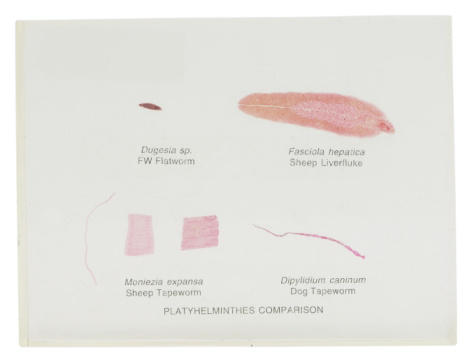I suspect that when most of us think about parasites, if we think about them at all, we conjure up a notion of something like a tapeworm or a tick, say ‘ICK’, and quickly go on to think about other things. For many decades, parasitologists have conducted intensive research on the fascinatingly complex life cycles of many parasites, often involving a sequence of several different body forms for the parasites and two or three kinds of hosts. Parasites have long been known to cause an assortment of infirmities in their hosts (blindness, liver malfunction, various diseases…the list is very long). However, research in the past 30 years or so has revealed that parasites need to be viewed in a much broader and deeper way: Parasites can interact with their hosts in insidious ways, often causing changes in behavior that are beneficial to the parasite but often not beneficial to the host.
There are now so many intriguing examples of mind-bending and behavior-changing by parasites that here I will feature some examples from non-human organisms. Humans are certainly subject to the same kinds of host-manipulations by parasites, and perhaps I’ll write a second essay presenting some cases that affect humans in serious ways. In many cases, perhaps most, the precise physiology by which the minds of the hosts are bent is still a subject of intense research, but the examples themselves should open some of our mental doors.
There is a wasp that parasitizes certain kinds of spiders, laying an egg in a selected host. The wasp larva somehow induces the host spider to stop weaving a web and start spinning a cocoon. When the cocoon is finished, the larva kills the spider and enters the cocoon, using it as housing while the larva transforms into an adult wasp.
Another wasp parasitizes woolly bear caterpillars by laying eggs inside. Parasitized woolly bears choose to eat a diet richer in carbohydrates than unparasitized woolly bears, which normally choose a more protein-rich diet. When the wasp larvae emerge from the carbo-loaded caterpillars (now dead), they are bigger than those from protein-fed caterpillars; the carbs are turned into high-energy fats, and the wasp larvae prosper from their enriched diet.
Yet another wasp uses cockroaches as a host. An adult wasp first stings a cockroach in the thorax, causing temporary paralysis. It then stings the helpless roach in particular portions of the brain, feeling around inside the roach’s head until its stinger finds the right places for egg-laying. After an egg is laid, the roach grooms continually and does not run away, even though it is then physically capable of doing so. Meanwhile the wasp goes off to find a burrow to store the parasitized prey. The wasp returns to the roach, breaks an antenna and drinks some blood, and hauls the roach off to the burrow. Wasp venom slows the roach’s metabolism so it stays alive long enough to be eaten (fresh!) by the larva.
And don’t forget Sacculina, the remarkable barnacles that parasitize crabs (and have appeared in these essays before). An infected male crab is unable to molt and grow, and is effectively castrated, becoming female-like in both shape and behavior—reportedly even courting and egg-tending like a female.
Still other parasites make their hosts behave in ways that increase the probability that the parasite gets transmitted to the next host or a better habitat. A spiny-headed worm infects some amphipods (small crustaceans), causing the hosts to move toward light (the water surface), where they are more likely to be eaten by ducks (or accidentally by aquatic mammals), which serve as the subsequent host. The larvae of a horsehair worm infect crickets and grasshoppers, causing them to jump into water, where the adult worm (but not the cricket) is at home.
A parasitic fungus gets into certain ants, causing them to leave their usual habitat in the tree canopy and go lower in the tree, where the fungus then erupts from the ants’ heads, showering its spores into salubrious habitat below. A certain fluke in an ant makes the ant crawl up to the top of a grass stem where it is likely to be consumed by an herbivore, which is the ultimate host.
A very famous example comes from a group of bacteria known as Wolbachia. These bacteria live inside the cells of many insects and other arthropods and even some nematodes (round worms). Because they live in the cytoplasm of the cells (not the nucleus), they are typically transmitted from mother to offspring, but sometimes may be carried by vectors (mites, parasitoid wasps?) that visit more than one host. There are many Wolbachias, infecting many different hosts, and their effects on the hosts are remarkably varied. They can affect reproduction by inducing parthenogenesis (females reproduce asexually, without males) or feminizing males (or sometimes killing off males altogether) — all of those effects would benefit transmission of Wolbachia and are probably not advantageous to the hosts. They can change egg-laying behavior and mating preferences, which might not benefit the hosts at all. Or they can change locomotor activity of the hosts such that the hosts do more foraging, which could benefit both Wolbachia and the host.
Viruses are intracellular parasites and many stories could be told about them. It is pertinent to note that recent research has found that when immune systems of both vertebrates and arthropods respond to a pathogen invasion of the host, the brains of the infected animals may be influenced in ways that affect their social behavior. This opens a door to the possibility of myriad fascinating links between parasites, immune systems and behavior; the story will continue to unfold as research follows the links.
• Mary F. Willson is a retired professor of ecology.

